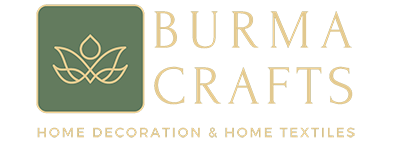- Home
- /
- Lacquerware Sector
The Secret of thit si (natural lacquer tree sap) for durability home decoration products.
1. Intro
Myanmar lacquer is used in residential and professional interiors.Our most popular items are tableware, decorative items, and furniture. We also offer customised items for international buyers with high-volume projects.
HS Codes for Key Products = MLA 46029090
2. Why buy
- Myanmar lacquerware is highly durable and renowned for its excellent quality, due to the high viscosity of thitsi (lacquer tree sap). The long curing process further ensures top-grade products.
- Craft masters produce Myanmar lacquerware completely by hand, from start to finish.
- Raw materials such as lacquer tree sap, wood and bamboo are 100% natural and locally sourced in Myanmar.
- Because of this, Myanmar lacquer is environmentally friendly and biodegradable.
- Our sector preserves heritage lacquer art of Myanmar and creates sustainable work for local communities by providing training and ensuring employment opportunities for local artisans.
- 72% of the artisans employed in our industry are women, who are well trained.
- Our products are produced and managed by generational local trader-families with a long-standing tradition in lacquerware production. The employment opportunities they offer directly benefit local communities.
3. Industry sector
Figure: Lacquer tree plantation and lacquerware production sites in Myanmar
Lacquerware is produced in different parts of Myanmar, ensuring employment opportunities throughout the country. An expandable and trainable workforce guarantees a high-volume production capacity for international markets.
4. Companies & structure
Total number of lacquerware artists = 4880
Total number of employees in the whole sector = 15,000
Approximately 10 companies have already been exporting for more than 15 years.
Main export destinations: France, Germany, Italy, UK, USA, UAE, Japan, Thailand, Singapore
All companies are registered in the Directorate of Investment and Company Administration (DICA) and Small and Medium Enterprises (SMEs) under the Ministry of Industry. Each company employs 40-100 people in a factory and 100-200 people as suppliers throughout the villages.
5. Role of support organisations
CBI – Centre for the Promotion of Imports from developing countries – the Netherlands
CBI has developed an export project for the home decoration & home textiles sector in Myanmar in the period 2019-2022. To make the sector more export-competent and enable it to better grasp European market opportunities, CBI provides Business Export Coaching for SMEs. Individual Export Coaching sessions focus on developing and implementing an Export Marketing Plan (EMP), product development and export business development. CBI also facilitates direct export links with European buyers, via market entry activities that connect producers with buyers.
ASEAN-Japan Centre (ASEAN Promotion on Trade, Investment and Tourism)
ASEAN-Japan Centre has been bringing lacquer artists, artisans, educators and scientists together for seminars, workshops and art exhibitions in Bagan, Myanmar since 2002.Exchange program (2002 to 2022)
The purpose of the Asian Lacquer Craft Exchange Project is to promote natural lacquer arts, crafts, industry, and education throughout Asia.
Technical and cultural exchange
- MLA organised Myanmar lacquer artists and experts to give lectures and workshops to Japanese students and other lacquer artists from different countries at the Lacquerware Technology College, Bagan, Myanmar, Cambodia, China.
- ASEAN-Japan Centre invited qualified young teachers from the lacquer centre in SE Asia to Japan to study lacquer art education, the lacquer crafts industry, lacquer conservation, and other techniques.
Joint Asian Lacquer Art Exhibition (2015 to 2022)
MLA and ASEAN-Japan Centre arranged for Myanmar lacquer artists to exhibit their lacquer art works at the International Lacquer Exhibition in Cambodia, Thailand, Myanmar, Vietnam and Japan – together with other Asians lacquer artists and technicians from each country.
Lacquerware Technology College (LTC Bagan, Myanmar)
LTC was founded in 1924 and it’s the only Lacquerware College in the international lacquer community. 1192 students graduated from LTC from 2009 to 2020.
- MLA and LTC organise a lacquer arts exhibition and symposium every year, in order to develop the Myanmar lacquerware industry.
- MLA brings lacquer expert artists to share knowledge and give part-time lectures to young generations students at LTC, Bagan, Myanmar.
UNIDO – United Nations Industrial Development Organization
UNIDO is the specialised agency of the United Nations with a unique mandate to promote and accelerate sustainable industrial and economic development. UNIDO supports countries to industrialise in ways that foster digital and green transitions and accelerate progress with the Sustainable Development Goals.
MLA cooperated with UNIDO in 2014, 2015 and 2016 to exhibit at (Expocasa) fair in Turin, Italy, in collaboration with Istituto Europeo di Design (IED) students for design creativity.
MLA and UNIDO coordinated Design Development Training for lacquerware clusters at LTC, Bagan, Myanmar.


